Sennheiser Accent Wireless
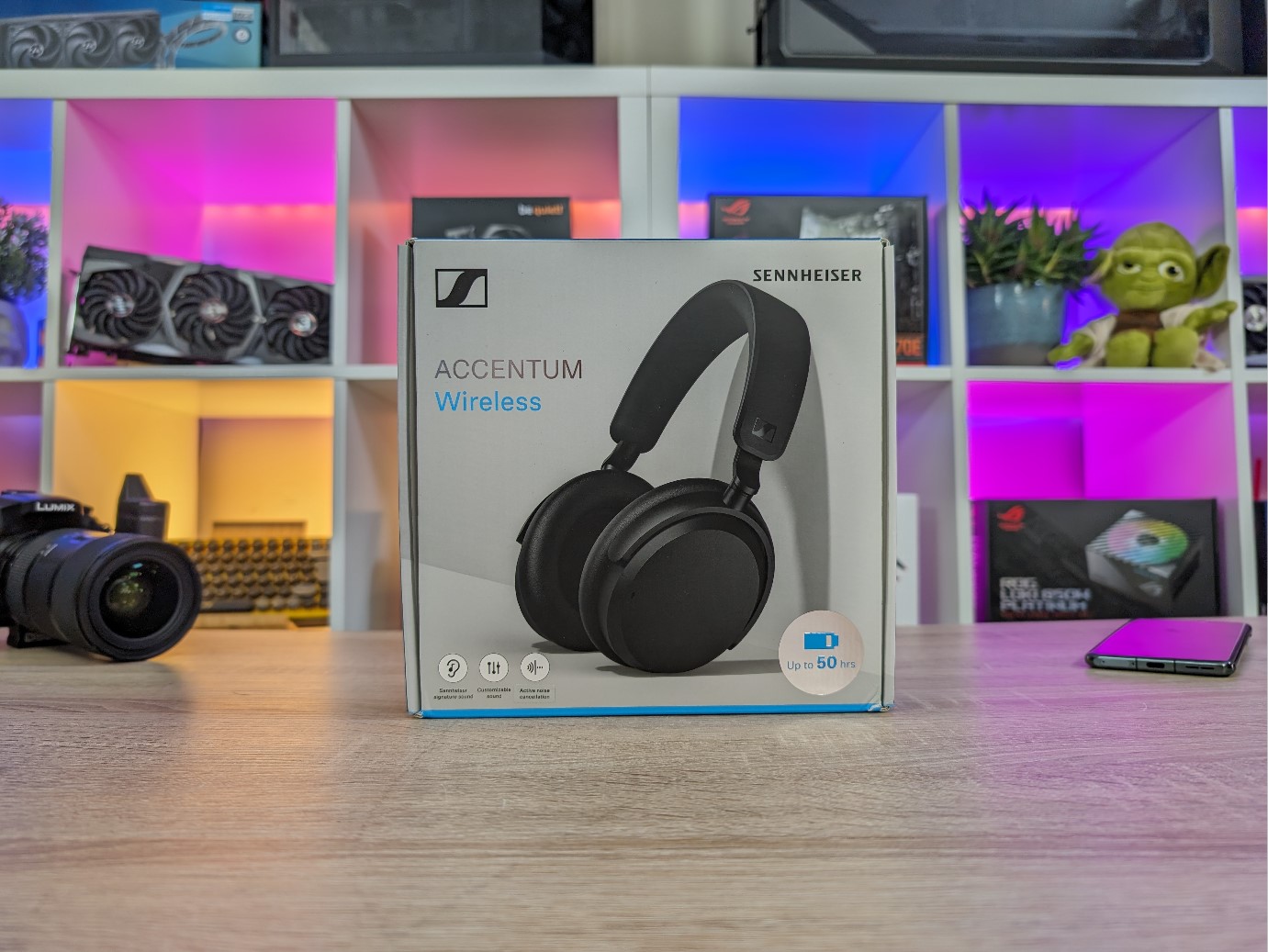
Specifications
- Style in use: Stereo headphones with headband
- Ear coupling: Around the ear, circum-aural
- Connectivity: Bluetooth 5.2 compatible, class 1, 10 mW (max)
- Transmission frequency / modulation: 2,402 MHz to 2,480 MHz; GFSK, p/4 DQPSK, 8 DPSK
- Supported Profiles: A2DP, AVRCP, HFP, HSP, GATT
- Supported codecs: SBC, AAC, aptX™, aptX HD™, mSBC, CVSD
- Speaker principle: Dynamic
- Speaker type/size: 6 mm diameter
- Speaker - frequency range: 10 Hz to 22 kHz
- Speaker sensitivity: 106 dB SPL (1 kHz / 0 dBFS)
- Speaker THD: <0.3% (1 kHz / 100 dB SPL)
- Active noise cancellation: Hybrid ANC
- Mic principle: MEMS
- Mic frequency range: 50 Hz to 8 kHz
- Mic pick-up pattern: 2 microphones, beam-forming for noise reduction
- Battery lifespan: Up to 50 hours of music playback via Bluetooth and with ANC (test mode: iPhone, medium volume)
- Charging time: approx. 3 hours with full charge, after 10 min of charging up to 5 hours of music playback
- Battery type: Built-in rechargeable lithium-ion battery 800 mAh
- Power supply: 5 V, 700 mA max., USB charging via USB-C connector
The key features on the list here are of course the option for ANC and then of course the impressive battery life of up to 50 hours.
A tour around the Sennheiser Accentum Wireless
I guess I won't offend anyone if I say that the Accentum Wireless comes with a rather muted design. You can get the set in two colors, the black that we have for testing, and then a white version.
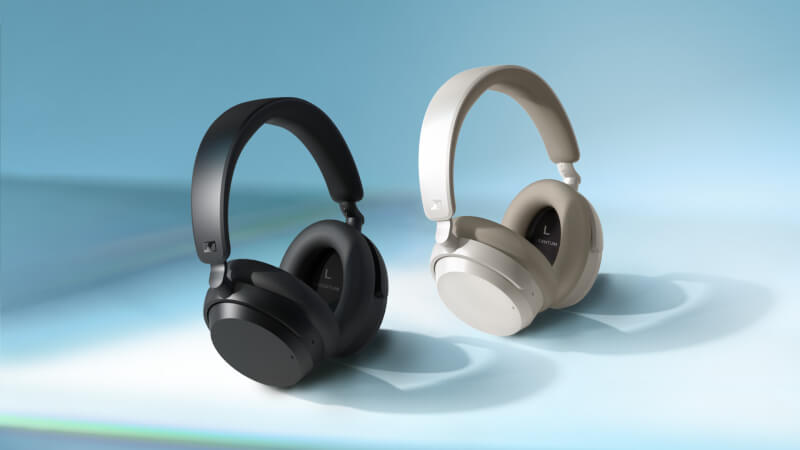
The white has a bit more color play with a combination of white and beige, while the black is black from head to toe.
The materials are primarily plastic with a matte finish. The ear cushions are made of artificial leather and comfortably soft foam. Both ear cups can be rotated 180 degrees, so there are free options for placement around the neck or on the table.
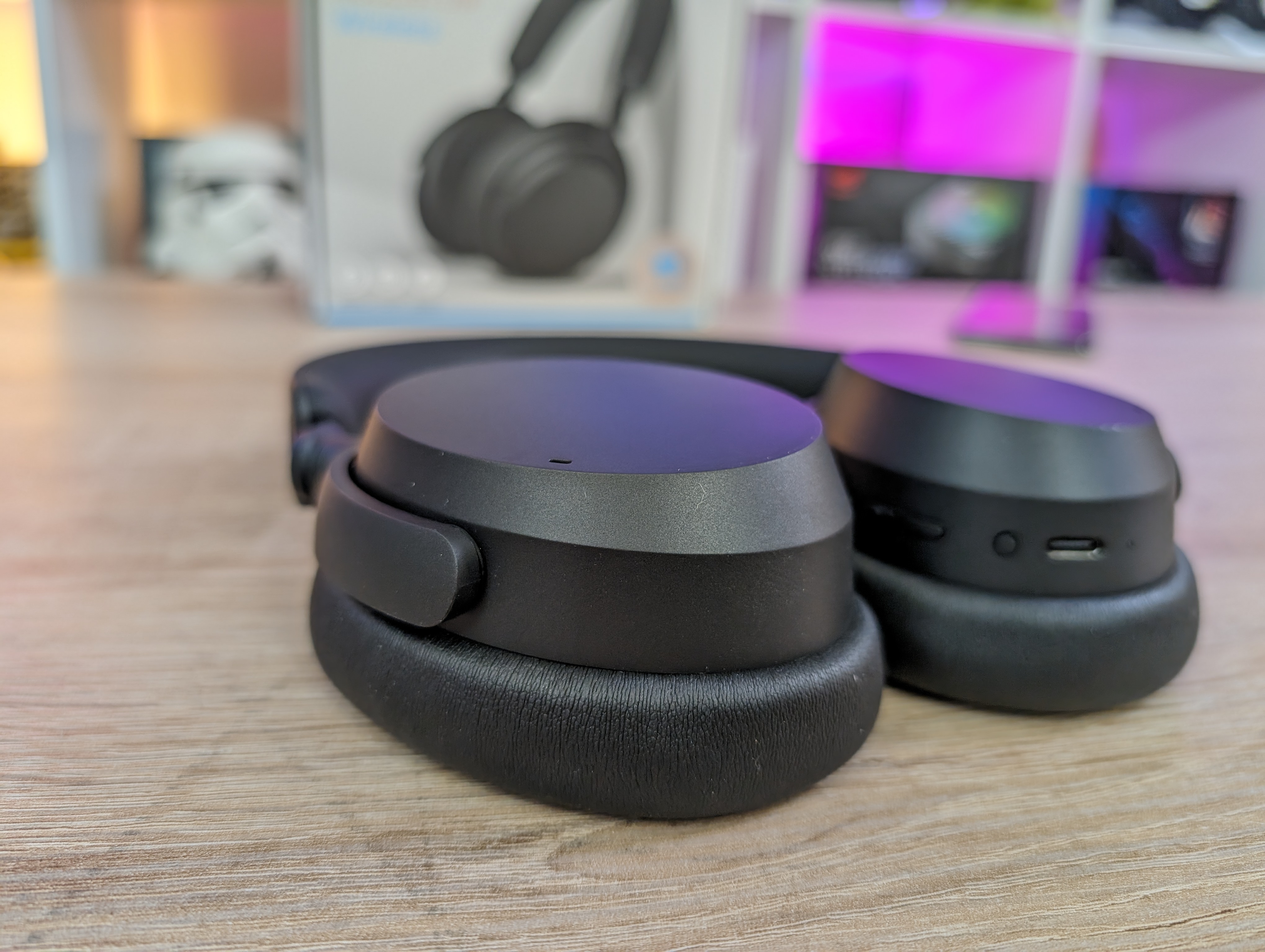
You can of course adjust the size steplessly via the headband, which is also comfortably padded. There are no structural metal parts, but the whole kit feels solid and there are no annoying squeaky parts to trace.
The only thing that breaks the black finish are two discreet Sennheiser logos on the headband.
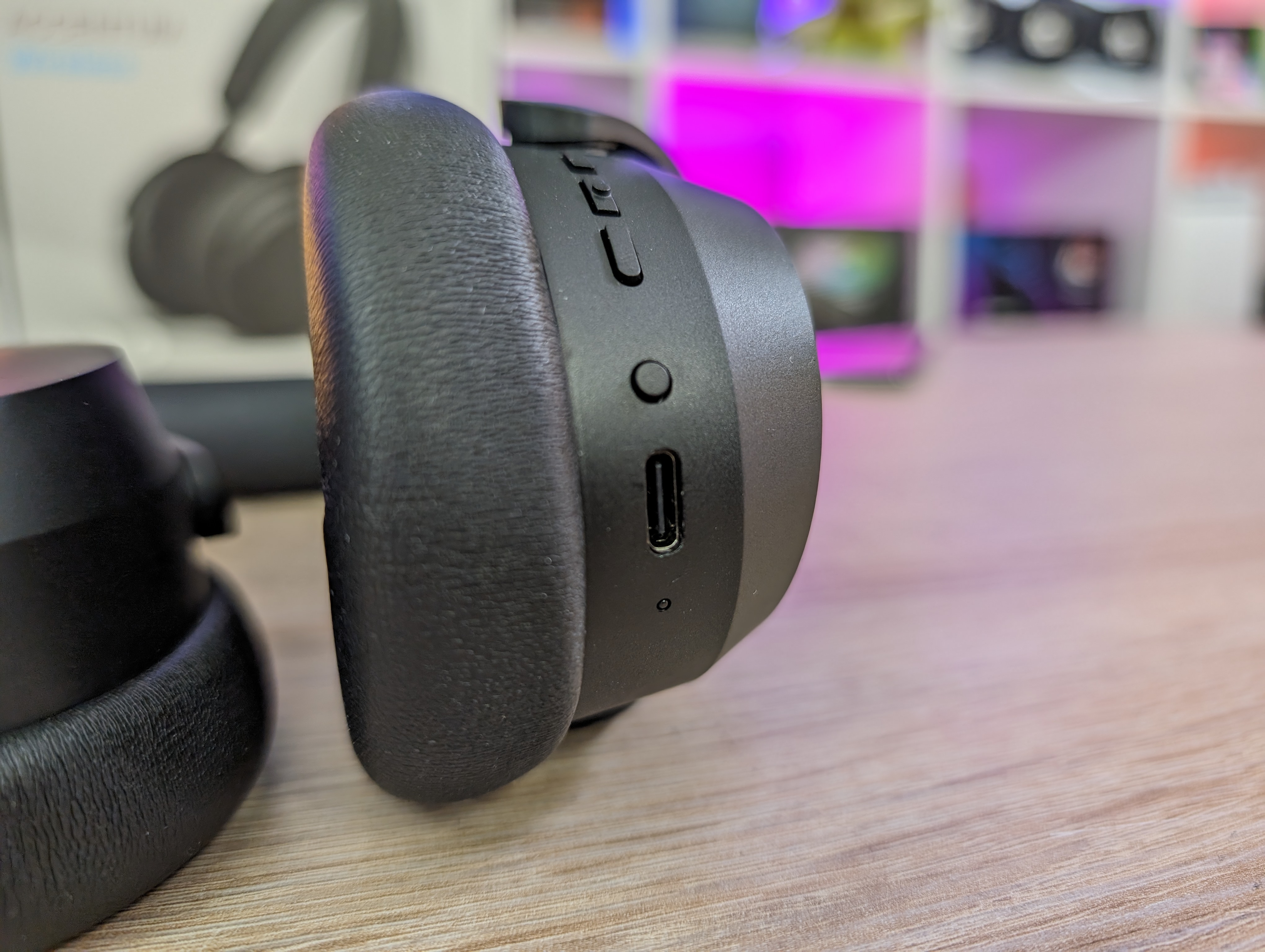
On the right ear cup we get a USB C plug for charging via the supplied USB A to USB C cable. In addition to charging, the connector can also be used for audio over USB if your output device supports it. A nice option to have with you.
Above the USB C connector, there is a power button that also serves as a function button for Voice Assistant and ANC/Transparency mode. It is along with three buttons for operating call and media management. The middle one of the three is marked so it is easier to find during use.
Accentum Wireless comes in with a total weight of just around 220 grams and feels wonderfully light.
Software
Adaptation of sound and settings is done through Sennheiser's Smart Connect app on your smartphone. Here there are quite good options for adapting the sound so that it lands exactly as you want it to.
.jpg)
There is a 5-band EQ so you can manually adjust the sound. You can set things up yourself or choose from a list of seven presets. However, it is also possible to use Sennheiser's My Sound Check presets.
Here, through a guide, you get the opportunity to choose from a number of sound tests to identify the sound profile you prefer. After this, a customized EQ setting is made based on the choices you make.
Sennheiser has also given us the opportunity to create so-called Sound Zones via their app. Here you can have the app, via the GPS position, switch to specific sound profiles. So you can, for example, have a certain profile which is set to be active when you are at work and another when you land in the gym. Of course, this requires the app to have access to your GPS location.
.jpg)
In Sound Zones, you can choose which EQ and Noise Control setting you want active when you enter the zone, and which should be active when you leave the zone again.
Finally, there is also the option to switch between ANC and Transparency Mode and adjust Sidetone. I can't immediately find a place where you can completely disable ANC or Transparency Mode, so it seems to be either or on that front.
Overall, I think that there are really good options in Sennheiser's Smart Control app. It is clear that a little more work has been put into the app than we see on many other apps of this type.
Testing
I've tested the Sennheiser Accentum Wireless over a few weeks, mainly with my Google Pixel phone and a bit with my laptop for work.
In terms of comfort, the light style is delightfully comfortable. Even with glasses there is no problem to use the set even for a long time.
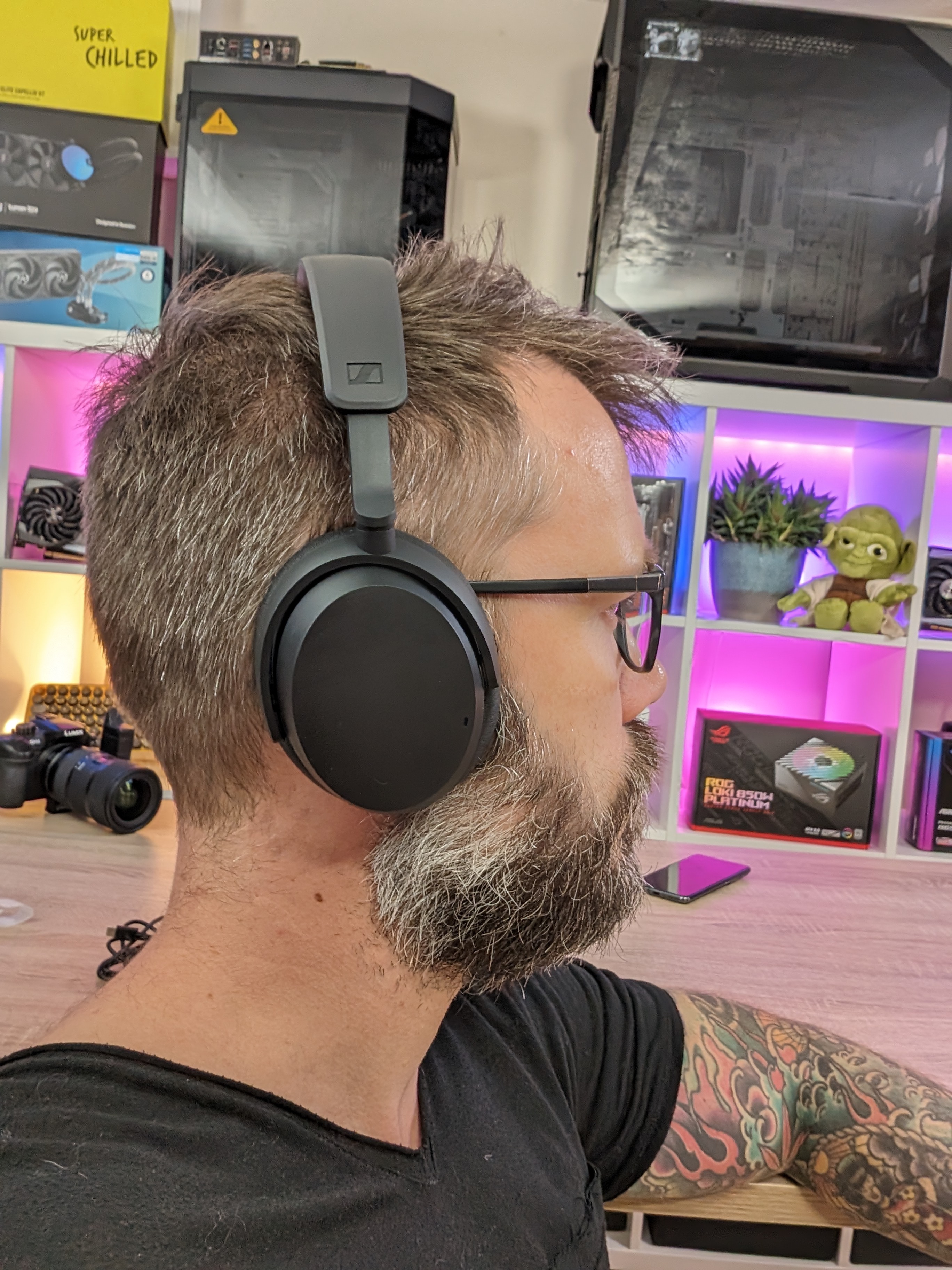
The sound profile of the Sennheiser Accentum Wireless is really good for a headset in this class. It is an area with which Sennheiser has a lot of experience in its baggage, and it can be heard. Even though they are smaller drivers than in their big Momentum 4 Wireless, you can't go wrong with the cheaper Sennheiser Accentum Wireless.
You get a rich and well-defined sound image with solid bass and good clear levels in the middle and high tones. I think it might lack a bit of fullness and clarity when compared to a headset like the Bower & Wilkins Px7 S2e that I looked at not too long ago.
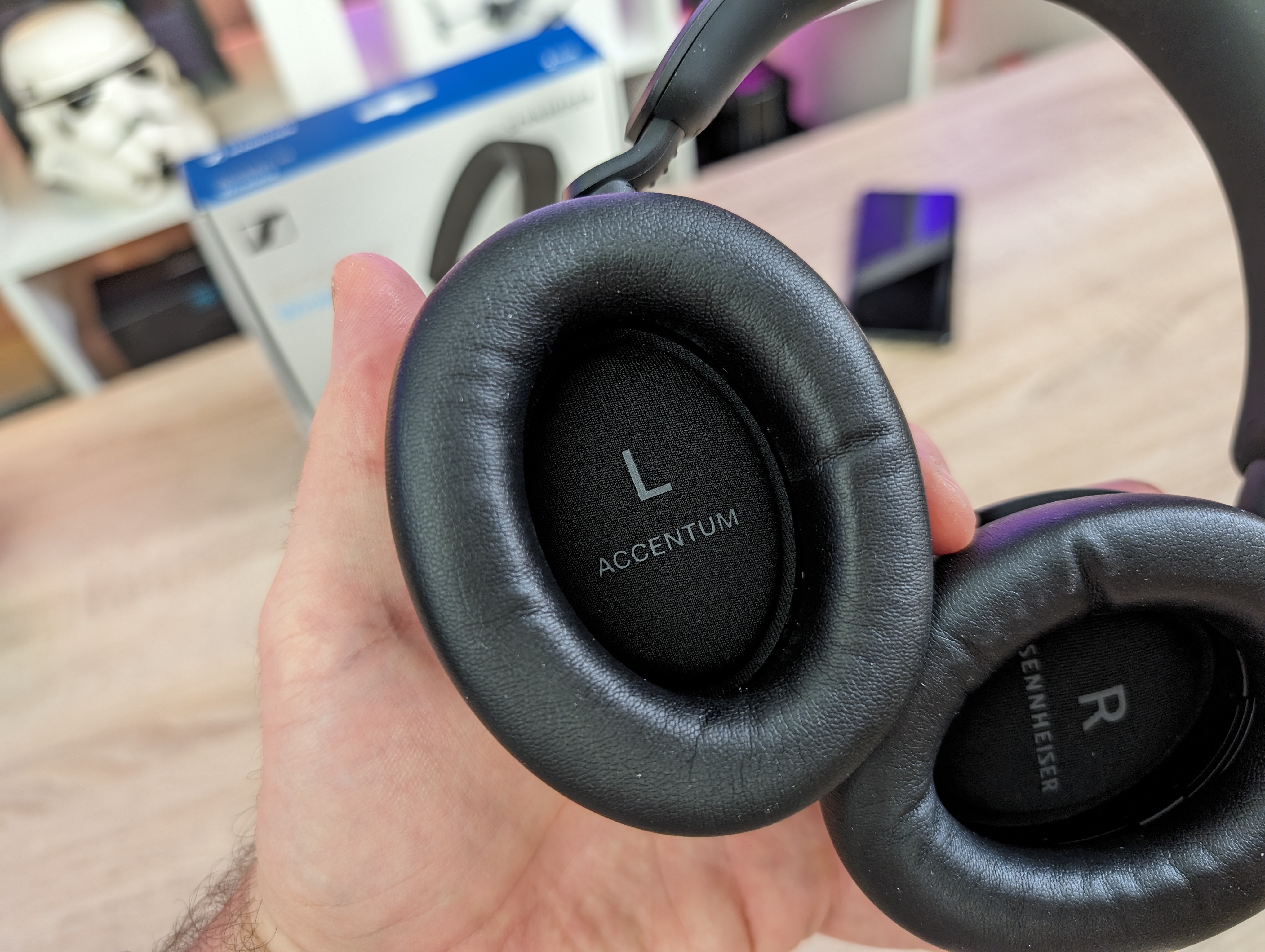
Unfortunately, the ANC part also doesn't come all the way up and hits any of the stick. It provides a good reduction in general noise and still allows you to hear voices etc. around you. It is not the great blanket of peace that you can experience with other more expensive headsets. Here, however, the price of Accentum Wireless must be taken into account.
Unfortunately, the microphones are not super good either. In quiet surroundings, they do the job well and catch your voice without any major problems. However, it is not a particularly clear sound that is delivered, and it has a slightly canned quality.
If you are in noisy surroundings, this is only amplified and you sound mostly like an old radio. That said, the set still manages to deliver a voice that is clear enough that you don't lose parts of the conversation. So Sennheiser deserves points there.
Price
At the time of writing, I can find the Sennheiser Accentum Wireless with an online price of around 200$. It is around 180$ kroner less than big brother Momentum 4 Wireless.
Conclusion
With the Accentum Wireless, Sennheiser has created a wireless headset with ANC that is comfortable and subdued in its style.
Despite aiming for a cheaper price tag, Sennheiser has still managed to squeeze solid sound and sensible ANC into the set.
It is topped off with super good battery life and a price that is well below other headsets of the same type that we have seen in the past.
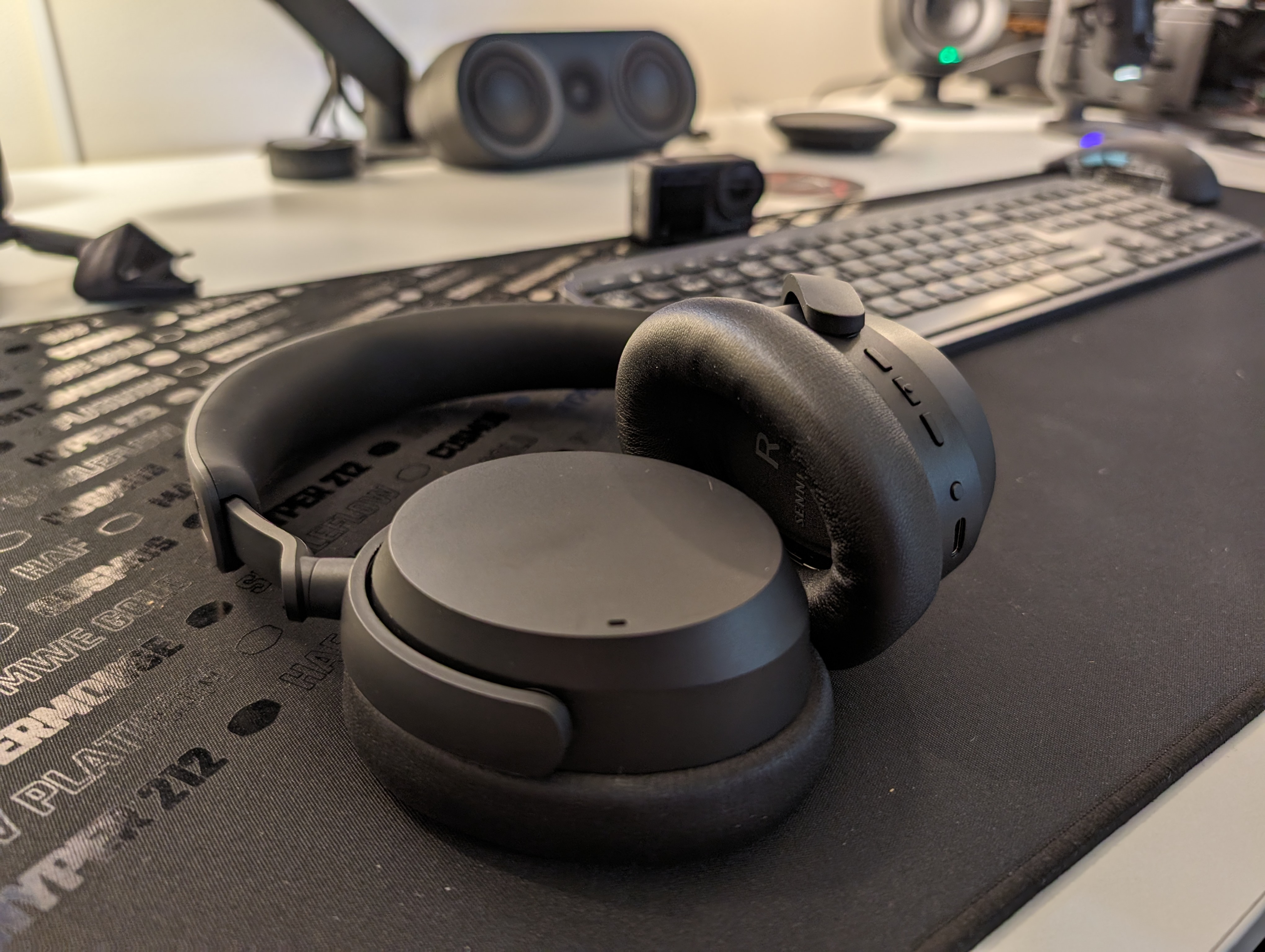
You lose a bit in finish and sound overall, but the price, which is around 180-250$ below other sets we have looked at, such as the Bower & Wilkins Px7 S2e , makes up for it if you are a price-conscious consumer.
We end up with a final grade of 9, for a headset that does super well for the price. The biggest disadvantage is the slightly below average microphones.
Pors:
- Good Sennheiser sound
- Solid app
- Long battery life
- Good fit
- Price
Cons:
- The microphones lag a bit

Latest headset
-
20 Octheadset
-
07 Marheadset
ASUS ROG Pelta
-
05 Marheadset
Razer Blackshark v2 X
-
27 Janheadset
Skullcandy Icon ANC
-
28 Novheadset
Razer Kraken V4 Pro
-
01 Novheadset
Audeze Maxwell
-
16 Octheadset
Logitech G Astro A50
-
04 Octheadset
ASUS ROG Delta II
Most read headset
Latest headset
-
20 Octheadset
Logitech G321 Lightspeed
-
07 Marheadset
ASUS ROG Pelta
-
05 Marheadset
Razer Blackshark v2 X
-
27 Janheadset
Skullcandy Icon ANC
-
28 Novheadset
Razer Kraken V4 Pro
-
01 Novheadset
Audeze Maxwell
-
16 Octheadset
Logitech G Astro A50
-
04 Octheadset
ASUS ROG Delta II






